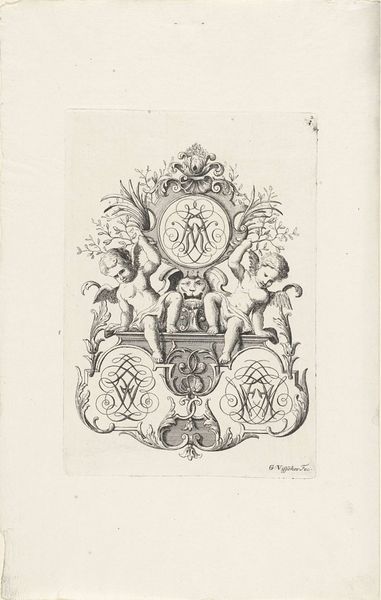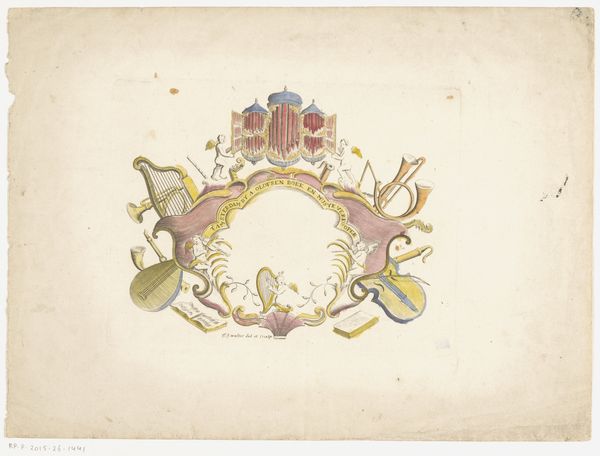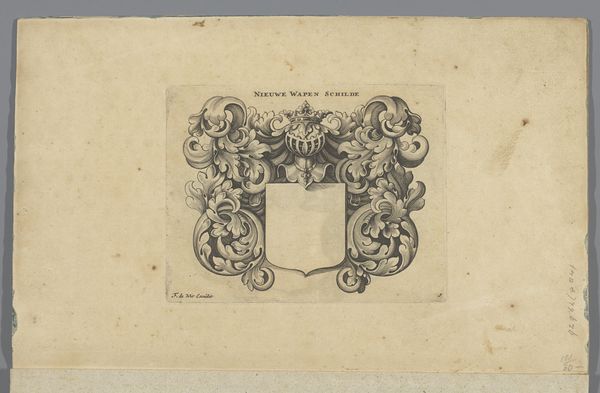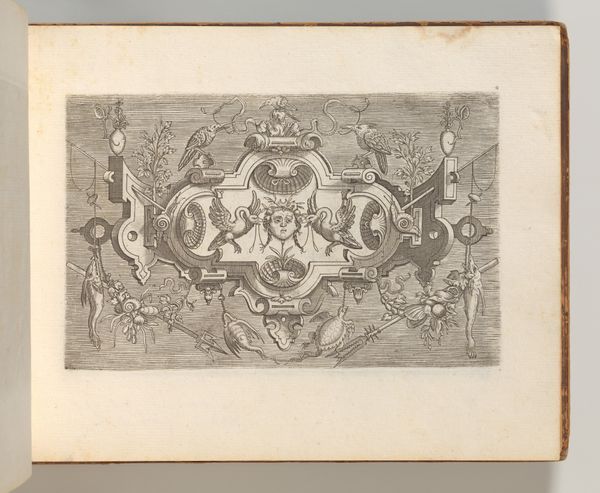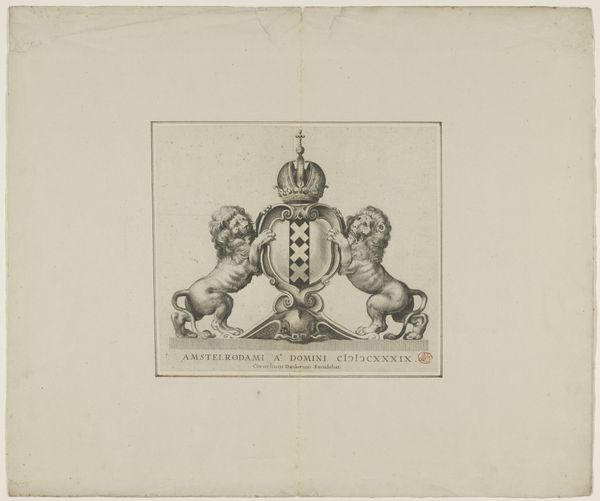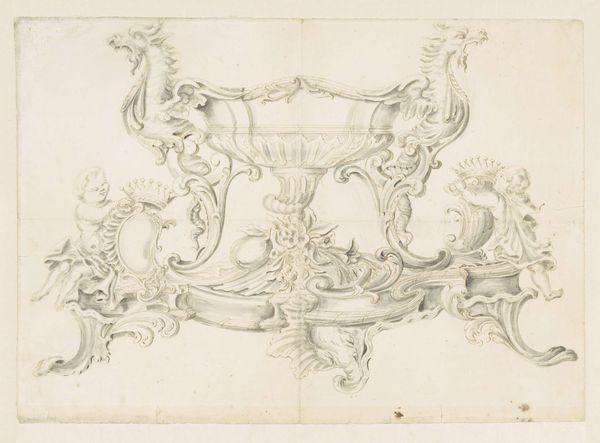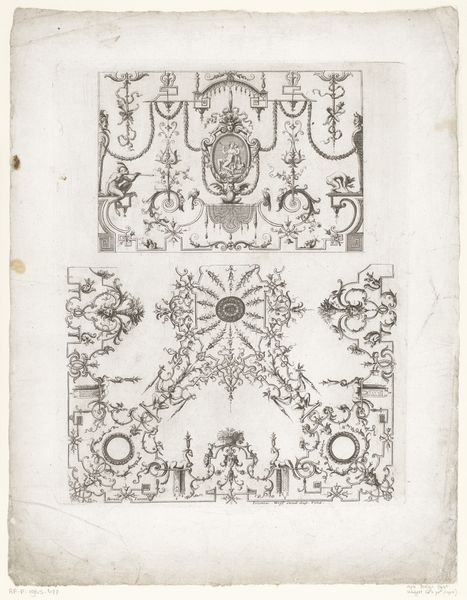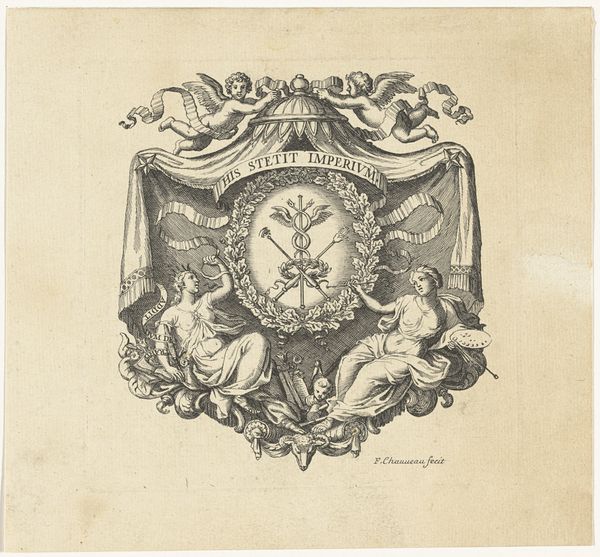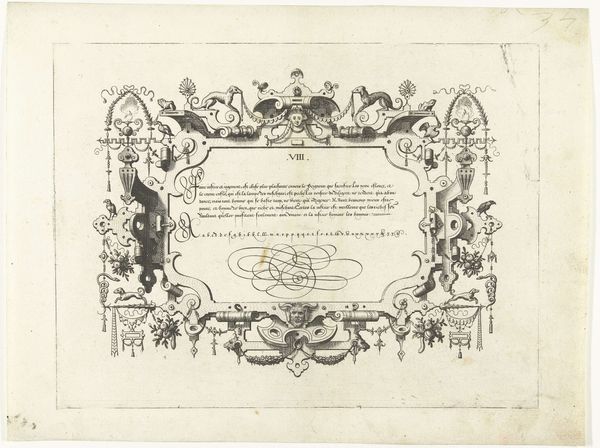
graphic-art, print, etching, engraving
#
medal
#
graphic-art
#
allegory
# print
#
etching
#
form
#
line
#
islamic-art
#
history-painting
#
academic-art
#
engraving
Dimensions: height 244 mm, width 312 mm
Copyright: Rijks Museum: Open Domain
Curator: Look at this print; it feels so intentionally...weighty, doesn't it? Editor: Yes, almost oppressively so. What are we looking at here exactly? Curator: This is "Gedenkpenning voor de slag bij de Doggersbank" from 1781 by Noach van der Meer the Younger. Essentially, it's a commemorative medal design for the Battle of Dogger Bank, rendered in etching and engraving. Editor: A battle rendered in such...precise lines? It feels strangely sanitized. All those meticulous details, but the potential for chaos feels entirely absent. It seems almost bureaucratic rather than celebratory. What's with all the heraldry? Curator: Heraldry was *the* language of power, wasn't it? The lions, the crowns, all these visual emblems assert authority. The inscription "Crescunt Concordia Parvae Res" is a Latin motto translating roughly to "Small things grow through concord," or harmony. The implication being that unity will bring prosperity and might. This imagery really sells a strong message to reinforce the legitimacy of leadership through family lineage and political position. Editor: True, but it’s interesting that a commemoration of a battle victory hinges on harmony. I'd be more interested in representations of those actually fighting. Wouldn't this art benefit from a bit less emphasis on those at the top and more on the people putting their lives on the line? This feels removed from the grim reality of warfare. It's less about grit and sacrifice and more about projecting an image of stately composure. Curator: Perhaps, but let's remember this wasn't meant to be a gritty battlefield depiction. Medals were carefully crafted messages; they communicated power. They served to promote ideas and boost national pride. There are swords, arrows, and other armaments up top. The artist made deliberate choices, but ultimately sought to elevate and glorify a very specific narrative of victory, not necessarily to mirror the events directly. Editor: I concede to some degree. Although I still see an underlying theme here with potential for exploitation, let's just focus on its beauty as art, as the details here certainly demand study. Curator: It makes me reflect upon whose stories get memorialized and the various ways artists choose to share narratives and perspectives of key historic events. I do like the allegorical components here, especially concerning concepts such as “Concordia.” Editor: Agreed. And as far as political rhetoric is concerned, this etching offers a wealth of historical commentary concerning 18th-century statecraft.
Comments
No comments
Be the first to comment and join the conversation on the ultimate creative platform.
